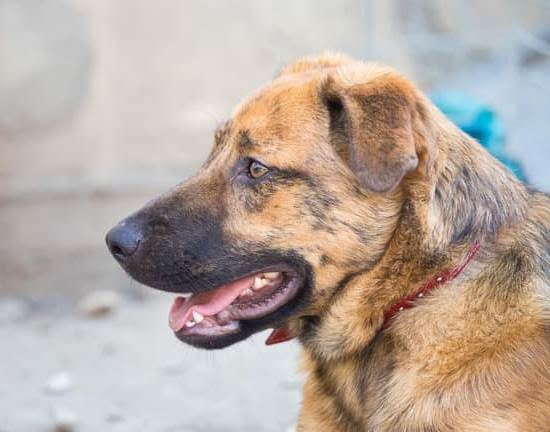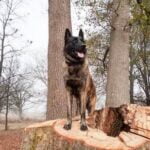Introduction
Dog mountain biking is a fun and unique way to explore the great outdoors with your four-legged best friend. Dog mountain biking combines the thrills of cycling with the joy of having your pup by your side on an outdoor adventure. To get started with dog mountain biking, you’ll need a few supplies: a bike, a sturdy leash, an appropriate harness or vest for the dog, and some basic safety gear to help protect both you and your pup while out on the trails.
Once you have all the supplies ready, it’s time to start training! You should begin by introducing your dog to their harness or vest and make sure they are comfortable wearing it for extended periods of time before hitting the trail. It’s also important that you train your pup to walk alongside you and respond to basic commands like “sit” and “stay” while on their leash. This will ensure they stay safely within reach while riding with you through unpredictable terrain.
You should also try practicing in different types of terrain such as dirt paths, gravel roads, hills, rocks, creeks, etc. This will give your pup exposure to different elements they may come across while biking with you so that they can learn how to respond appropriately. Lastly, be sure to reward them after each successful attempt at staying close during practice or when out riding together on trails – this will reinforce positive behaviors and make them look forward to future rides together!
Gear Up
Before you can begin training your dog for mountain biking, it is important to purchase or gather the necessary safety and activity gear. You will want to make sure that your dog has appropriate safety gear such as a harness and helmet to protect them from injuries. To provide a comfortable ride for your pup, you may need a bike basket that attaches to the handlebars of the bike. This will serve as a safe space for your dog that straps in securely and is breathable. If you plan on having more than one dog ride with you, there are special attachment bars available so you can attach multiple baskets to your bike. Additional accessories such as water canteens and collapsible bowls can be used when training your pup for longer rides. Anytime you plan to take your pup out for a long-distance bike ride, it is important they have all the necessary equipment they need during their workout session.
Establish Rules
Before beginning any type of dog training, it is important to set rules and expectations for you and your dog. Because mountain biking can be dangerous and physically demanding, it is important to train your dog in basic commands like ‘sit’ and ‘stop’ in order to ensure his and your safety while biking together. Set expectations such as walking near the bike, not running ahead between the bike’s spokes or getting close to other riders. Ensuring that your dog understands these basic rules will help keep him both safe and well-behaved during mountain biking trips. In addition, reward good behaviour with positive reinforcement techniques such as verbal praise or treats. This will create a positive association for your dog encouraging him to repeat his desired actions when given cues. When teaching new commands, be sure to practice in a safe area with no distractions so both you and your pup can focus on learning.
Start Low and Slow
Before taking your pup out on the trail, it’s important to ensure that they have an understanding of the basics. Begin by teaching your dog simple commands, such as “sit”, “stay”, and “come”. You can use treats to reward them for following instructions. You should also work on leash walking for short distances and in calm environments. Practice this in front of your home and in quieter neighborhoods where there is slow traffic. This will give your dog an opportunity to get used to the sights, smells, and sounds of being near cars on a bike before hitting more intense trails. It will also give you the chance to teach your pup specific behavior expectations so they stay safe while biking with you. For example, you should create a command like “hidden” which tells them it’s time to stop and be quiet when approaching cars or other bikers. This can help prevent unnecessary distractions or even accidents while trail biking.
Progress and Challenge
If you want to train your dog for mountain biking, it is important to increase the difficulty of the trails you take them on according to their skill level and comfort. Start by taking them on flat trails with few hills that are close to home. While on these easier trails, work on basic obedience commands such as sit, stay and come, along with basic leash manners. Once they become comfortable with staying in heel position while walking and jogging, progress to slightly more challenging trails that feature rolling hills or some jumps or drops. Praise your dog regularly during these hikes, and begin introducing commands such as “follow me” or other cycling specific commands such as “go around” or “watch out!” As your dog progresses further, move onto even more difficult trails such as steep descents and technical sections where more core riding techniques are needed. Do not forget to spend time training both off the bike, such as running stairs or jumping over things when possible. This will help condition your dog for more difficult and longer rides with higher expectations from both of you. Finally, make sure your mountain biking companion is properly hydrated before hitting the trail and always have a first-aid kit handy in case of an accident along the way!
Seek Mentorship
Finding an experienced mentor can be beneficial when you are getting your dog ready for mountain biking. Choose an experienced mentor who is also a recreational dog trailrider, as this can help by providing insights and advice that might be particularly useful in the context of training a dog specifically for mountain biking. Your mentor will also provide valuable information on how to handle certain situations that may arise unexpectedly during a ride. Additionally, having someone riding with you with whom you trust and admire will build up your confidence and help relax both you and your pup as the two of you learn how to adapt seamlessly to the trails.
Protect Yourself
Before you start training your dog for mountain biking, make sure that both of you are properly equipped with the right type of safety gear. For the dog, there’s a few basic items they need to have while they’re biking: a vest or jacket with reflectors and a makeshift bicycle leash. The vest should be lightweight and sturdy enough to keep them safe from any bumps or falls; look for vests made out of breathable materials so your pup does not overheat. The reflective material will help in low-light conditions to ensure you and your pup can be seen by others on the trails. Additionally, investing in a homemade bicycle leash is another great way to keep yourself secure on the trails; it will also prevent them from running ahead if they spot other animals or distractions.
Ready for Races
Mountain biking is a popular activity that provides an exciting adventure for both yourself and your dog. While the physical demands of heading off-road can initially be intimidating, it’s nonetheless possible to train a dog to participate in events like triathlon, cross country races, or endurance running. In order to do this properly and ensure that the pup enjoys their outdoor experience, it’s important to gradually build up confidence, start with small rides and fun activities on trails, and be mindful of any potential risks or dangers.
Before you gear up your pup for an event, it’s important to test their basic skills first. Start by introducing commands such as “hike” (to slow down), “forward” (for going faster), “stop”, and even “climb” (if needed). Next, practice on flat terrain where there are few obstacles. This will help the pup gain control of their balance and learn how to respond better when on unpaved land or hilly surfaces. As you progress through sessions with more complicated maneuvers each time, it may be beneficial to join them up with other canine athletes as well – real competition can push any pup further and have them ready for mountain bike races faster than ever!
To build up excitement for mountain biking farther out from home base, work with your pooch by doing weekly field trips and hikes together so they become familiar with the environment. Plus these getaways will help improve overall strength and cardio health while gaining insight into trail safety measures needed outside planet Earth. Additionally, make sure to spare some energy-fueling snacks during long rides as proper nutrition is vital while tackling such physical challenges – be sure to research what food sources would provide all necessary nutrients without disrupting digestion!
Have Fun!
Training your dog to become a mountain bike-riding companion can be an immensely enjoyable and rewarding experience for both you and your furry friend. Before beginning the process, ensure that your pup is fit enough for long-distance jogs or runs with you and isn’t prone to over-excitement or overexertion when running in an off-leash environment. Additionally, always make sure that your dog has basic obedience training, such as commands to obey leash laws, stay put when instructed, or obey other commands like sit, stay or come.
Once you have made sure of the above circumstances and prepared all the necessary safety measures (including collar IDs), it’s time to start taking short trips on your bike with your dog. Start on easy flat terrain at a slow pace. Make sure that the first few trips are fun bonding experiences by incorporating positive reinforcement into training sessions – reward desired behaviors with treats and praise! If energizers like squirrels appear along the route make sure to pull over so that your pup doesn’t get too distracted. Also remember to show kindness and patience during these first couple of steps – this will set the tone for future rides together.
As time progresses slowly increase speed times up hills. Teach your pup how to handle gradual grade increases without straining themselves too much – don’t forget that each breed might require its own pacing adjustments due their physical tendencies and limits. Again incorporate positive reinforcement techniques – ask them to wait or take pauses between some steps on steeper inclines. Finally familiarize yourself with proper hydration techniques (especially important for temperatures above 80F/27C) – try using a hydration vest which also carries snacks for fast energy boosts for both you and your pup!
Nutrition
When training your dog for mountain biking there are several things you must pay attention to, including nutrition. Feeding your dog the right food and nutrients is essential for performance. With that being said, here is a quick guide on how to feed your dog:
1. Choose a high-quality balanced formula – You should look for a food that is specifically designed for energy and muscle support. It should contain whole proteins, healthy carbohydrates, low fat content and antioxidants along with essential vitamins and minerals. You may also want to check the ingredients list to make sure it contains no synthetic preservatives or additives.
2. Multivitamins – When it comes to multivitamins for dogs, consult with your veterinarian about which supplements would be most beneficial for your pet’s individual needs. Make sure the supplements are specifically made for canines as some may be too strong of an dosage for dogs and could potentially cause harm.
3. Frequency – Dogs require approximately four meals a day or feed in portions throughout the day instead of all at once depending on what type of breed you have I could even go as far as breaking down meals into smaller portions every four hours when already out on long rides. If you’re unsure what frequency your particular breed of dog needs then have a discussion with your vet about their specific nutritional needs at different stages in their life cycle should also help determine what frequency would work best for them overall.
4. Hydration – Proper hydration is just as important as feeding the right foods during mountain bike training sessions since dogs can easily become dehydrated from intense physical activity, which can lead to medical issues if left unaddressed over time so make sure to always keep fresh water nearby during these activities!
Conclusion
Training your dog to mountain bike with you is an incredibly rewarding experience. The bond that you can form with your four-legged companion while pedaling through nature makes not only a great workout, but is also a chance for both of you to connect on a deeper level. In addition to the closeness it brings, mountain biking with your pup has many other tangible benefits. Not only does it give your pup an opportunity for physical activity and mental stimulation, but it also provides them with socialization opportunities as well. With regular sessions of training, rides can be made increasingly longer, allowing your pup more time outside to explore and have fun! So start training your pup today – the experience of sharing trails and pedal power together will bring hours of joy for both you and Fido.

Welcome to the blog! I am a professional dog trainer and have been working with dogs for many years. In this blog, I will be discussing various topics related to dog training, including tips, tricks, and advice. I hope you find this information helpful and informative. Thanks for reading!





